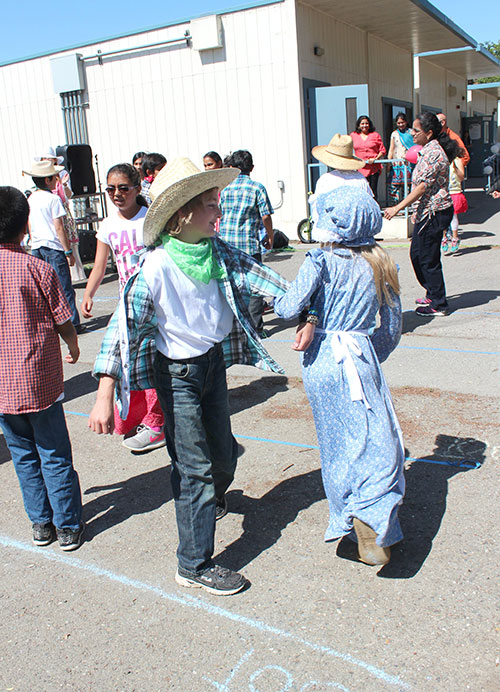

About 100 fourth graders at Laurelwood Elementary School dressed up on Friday, May 27. Some boys came in blue jeans and white shirts with handkerchiefs wrapped around their necks or faces. Some girls came in prairie dresses, bonnets or cowboy hats. It was California History Day at the school and the children were ready to sample life as it was in the Golden State before 1850.
“This is an activity for all the fourth graders at our school,” says Kristy Chang, fourth grade teacher and faculty organizer of California History Day. “All year long, we study California history as part of our social studies curriculum. On this day, we do activities to celebrate each different era in California history.”
Early in the morning, the children claimed spots on the field and hunted for gold.
“We’re learning about the Gold Rush,” says Jenell, 9. “Back then, people had to look for gold by panning for it or mining for it with pick axes. Doing this activity makes it more fun than reading a textbook because we get to experience it.”
After the hunt for gold, the children set up tents in small groups so they could eat their lunches together in them later. Because bartering was a part of the economic system back then, children brought items from home, such as paper airplanes and fans, to trade with neighbors.
Five activity stations set up represented five different eras of California history: Native Americans, the Spanish missions, the Mexican ranchos, the Gold Rush, and westward expansion and pioneer life. These stations explored the time period up until California became a state, which was 1850. The stations were run by parent volunteers.
“At the Mexican ranchos station, they are making tortillas and there are potato sack races and horse stick races,” Chang says. “They are panning for gold and playing black jack at the Gold Rush station. At the Spanish missions station, they are doing a craft called ‘God’s eyes’ by using yarn and popsicle sticks to make pretty designs. At the pioneer life station, they are learning a square dance called the Virginia Reel. At the Native American station, they are making cornhusk dolls and playing a game called Hoops and Spears to reminisce about how the Native Americans hunted.”
Students “hunted” by throwing sticks into round hoops. The hoops represented animals and the sticks replaced actual spears.
“I liked all the stations,” says Nate, 10. “At the station about Native Americans, we got to throw some sticks through the hoops like spears. It made me feel like I was hunting something. The tortilla station was pretty cool. I got to make tortillas and eat them when I was finished making them. They tasted delicious. This helped me learn more about California history because I didn’t know that people made tortillas in the Ranchos time.”





